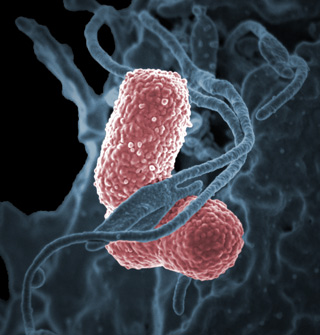
A neutrophil (a type of white blood cell, shown in blue-gray) interacting with Klebsiella pneumoniae bacteria (shown in pink). This is one example of the types of functions that Systems Biology seeks to understand and describe. Watch Lecture 1 to see a video of a neutrophil chasing and engulfing a bacterium. (Image by NIAID, CC-BY.)
Instructor(s)
Prof. Jeff Gore
MIT Course Number
8.591J / 7.81J / 7.32
As Taught In
Fall 2014
Level
Undergraduate / Graduate
Course Description
Course Features
Educator Features
Course Description
This course provides an introduction to cellular and population-level systems biology with an emphasis on synthetic biology, modeling of genetic networks, cell-cell interactions, and evolutionary dynamics. Cellular systems include genetic switches and oscillators, network motifs, genetic network evolution, and cellular decision-making. Population-level systems include models of pattern formation, cell-cell communication, and evolutionary systems biology.
Other Versions
Other OCW Versions
OCW has published multiple versions of this subject. ![]()


